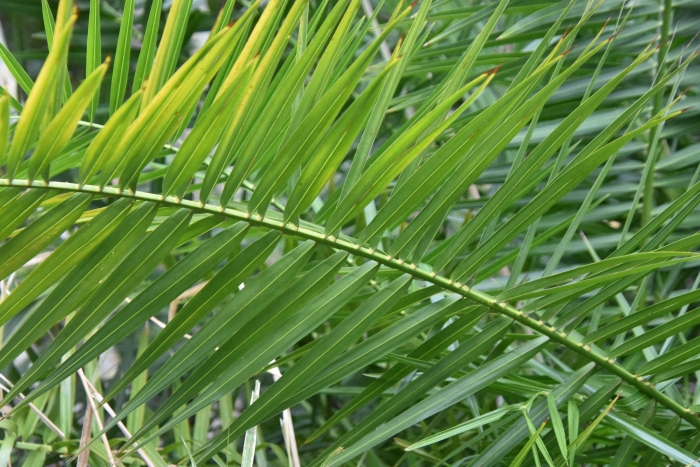Senegal Date Palm
(Phoenix reclinata)
Senegal Date Palm (Phoenix reclinata)
/
/

Mike Ostrowski
CC BY-SA 4.0
Image By:
Mike Ostrowski
Recorded By:
Copyright:
CC BY-SA 4.0
Copyright Notice:
Photo by: Mike Ostrowski | License Type: CC BY-SA 4.0 | License URL: http://creativecommons.org/licenses/by-sa/4.0/ | Rights Holder: Mike Ostrowski | Publisher: iNaturalist | Date Created: 2021-02-06T08:02:23-08:00 |











































































Estimated Native Range
Summary
Phoenix reclinata, commonly known as Senegal Date Palm, is an evergreen palm native to diverse habitats including moist forests, riverine landscapes, and savannahs in Eastern and Southern Africa, the Horn of Africa, and the Western Indian Ocean islands. This dioecious palm is notable for its clumping growth habit, producing multiple stems that can reach 7.5 to 15 meters in height and 30 cm in diameter. The Senegal Date Palm has pinnate leaves that can grow up to 5 meters long, with leaflets arranged in a V-shape along the rachis. The male flowers are a dirty, pale yellow and are short-lived, while the female flowers are small, globose, and yellow-green. Flowering occurs in spring to early summer. The edible fruit is oblong, orange when ripe, and about 2.5 cm in diameter, borne in large, pendant clusters. The fruit and palm heart are both utilized for human consumption.
The Senegal Date Palm is valued for its tropical appearance, shade provision, and edible fruit. It is often used in ornamental plantings, urban landscapes, and as a focal point in gardens. It requires full sun and high amounts of water, thriving in well-drained soils. While it can tolerate a range of soil types, it performs best in loamy or sandy soils. Gardeners should be aware of its potential invasiveness, particularly in regions like Florida, and its propensity to form dense thickets that can outcompete native vegetation.CC BY-SA 4.0
The Senegal Date Palm is valued for its tropical appearance, shade provision, and edible fruit. It is often used in ornamental plantings, urban landscapes, and as a focal point in gardens. It requires full sun and high amounts of water, thriving in well-drained soils. While it can tolerate a range of soil types, it performs best in loamy or sandy soils. Gardeners should be aware of its potential invasiveness, particularly in regions like Florida, and its propensity to form dense thickets that can outcompete native vegetation.CC BY-SA 4.0
Plant Description
- Plant Type: Tree
- Height: 25-50 feet
- Width: 15-25 feet
- Growth Rate: Moderate
- Flower Color: Yellow
- Flowering Season: Spring, Summer
- Leaf Retention: Evergreen
Growth Requirements
- Sun: Full Sun
- Water: High
- Drainage: Medium, Fast
Common Uses
Bird Garden, Edible*Disclaimer: Easyscape's listed plant edibility is for informational use. Always verify the safety and proper identification of any plant before consumption.
Natural Habitat
Moist forests, riverine landscapes, and savannahs
Other Names
Common Names: Wild Date Palm , Reclining Date Palm , Senegal-Dattelpalme , Dattier Du Ségégal
Scientific Names: Phoenix reclinata , Phoenix spinosa , Phoenix abyssinica , Phoenix leonensis , Fulchironia senegalensis , Phoenix baoulensis , Phoenix comorensis , Phoenix djalonensis , Phoenix dybowskii , Phoenix equinoxialis
GBIF Accepted Name: Phoenix reclinata Jacq.